In this lesson, you’re going to learn the Korean alphabet in only 30 minutes using visual associations, mnemonics, and stories.
That means you will be able to read the Korean alphabet letters A to Z and start sounding out Korean words anytime you see them. You may be surprised how often you see Korean characters!
We’ve also got a Hangul chart below that has audio samples. If you already know the alphabet, you can skip directly to the chart and practice your pronunciation and listening. If you have decided to embark on your Korean learning journey, the best place to start is here!
Let’s get to it!
Contents
- 1 Hangeul – The Korean Alphabet
- 2 Korean Alphabet System
- 3 Korean Alphabet Pronunciation
- 4 Korean Alphabet Chart (Hangul)
- 5 Korean Alphabet A to Z
- 6 Korean Alphabet in Order
- 7 How many letters are in the Korean alphabet?
- 8 How to Learn the Korean Alphabet
- 9 Names of the Korean Letters
- 10 How to Write in Korean
- 11 English to Korean alphabet
- 12 The Korean Language
- 13 Hanja
- 14 Romanization of Korean Letters
- 15 What to do next
Hangeul – The Korean Alphabet
The official writing system for South Korea is Hangeul (한글), which is the name for the Korean Alphabet system. That means you can say “Hangeul” (also romanized as “Hangul”) and “Korean alphabet” interchangeably since they mean the same thing.
Korean is the official language of South Korea, and it uses Hangul as its alphabet and writing system. The same writing system is used in North Korea, which is called Joseongeul (조선글). Both South Korea and North Korea use the writing system created by King Sejong the Great.
When it was invented in 1443, Hangeul used to be called 훈민정음 (Hunminjeongeum), which literally means: “The Correct Sounds for the Instruction of the People.”
“Hangul” in Korean
“Hangul” in Korean is 한글 (hangeul). Hangul is also written in English as “Hangeul.” There are two different ways of spelling the same word. “Hangul” is the most common way, and “Hangeul” is the newer way of writing it.
Hangul Meaning
The word Hangul comes from the Chinese character 韓㐎. “Han” means “Korean,” and “gul” means “letter.” Put them together, and you’ve got the term “Korean letter” or “Korean Alphabet.”
Korean Alphabet System
This alphabet system is mainly made up of Hangul characters. This is the system that’s widely and officially used in both North and South Korea.
However, there’s another system Koreans use for writing called Hanja. This system is made up of Chinese letters that are read with Korean pronunciation.
Korean Alphabet Pronunciation
The Korean alphabet pronunciation shares a lot of similarities with the English alphabet. That makes it easy to learn because you can use the pronunciation of English letters to learn the Korean alphabet pronunciation.
The Hangul alphabet consists of consonants and vowels that form syllable blocks. These syllables can be sounded out just like words in English.
Korean Alphabet Chart (Hangul)
Below is a basic Korean Alphabet chart for basic vowels and consonants. The Korean Alphabet chart is also known as the Hangul chart.
Korean Consonants Chart
The first Hangul chart is the Korean consonants chart. Next to each of the consonants is the Romanized spelling for that particular consonant. The spelling changes depending on whether the consonants are positioned at the start or the end of the syllable.
The romanization is only used for the spelling of the Korean word in English letters. If you’re learning Korean or want to know the correct pronunciation, then you should use the associations later in this lesson and learn the correct pronunciation of the Korean consonants.
| Consonant | Audio | Romanization (initial) | Romanization (final) | Pronunciation of Korean alphabet to English Words |
|---|---|---|---|---|
| ㄱ | g | k | “g” as in “gun” | |
| ㄲ | kk | k | ||
| ㄴ | n | n | “n” in “northeast” | |
| ㄷ | d | t | “d” in “door” | |
| ㄸ | tt | - | ||
| ㄹ | r | l | “l” in “ladder” | |
| ㅁ | m | m | “m” in “mail” | |
| ㅂ | b | p | “b” in “bed” | |
| ㅃ | pp | - | ||
| ㅅ | s | t | “s” in “seashell” | |
| ㅆ | ss | t | ||
| ㅇ | - | ng | ||
| ㅈ | j | t | “j” in “jug” | |
| ㅉ | jj | - | ||
| ㅊ | ch | t | “ch” in “church” | |
| ㅋ | k | k | “k” in “key” | |
| ㅌ | t | t | “t” in “teeth” | |
| ㅍ | p | p | “p” in “pie” | |
| ㅎ | h | t | “h” in “hat” |
Korean Vowels Chart
The second Korean alphabet chart is the Korean vowels chart. Next to each of the vowels is the romanized spelling of each vowel. The spelling of the vowels is consistent and doesn’t change. However, keep in mind that some people may spell words in Korean in English letters using their own system.
| Vowel | Audio | Romanization | Pronunciation of Korean alphabet to English Words |
|---|---|---|---|
| ㅏ | a | “a” as in “father” | |
| ㅐ | ae | “ae” as in “egg” | |
| ㅑ | ya | “ya” as in “yacht” | |
| ㅒ | yae | “yae” as in “yes” | |
| ㅓ | eo | “eo” as in “umbrella” | |
| ㅔ | e | “e” as in “egg” | |
| ㅕ | yeo | “yeo” as in “yummy” | |
| ㅖ | ye | “ye” as in “yes” | |
| ㅗ | o | “o” as in “old” | |
| ㅘ | wa | “wa” as in “waffle” | |
| ㅙ | wae | “wae” as in “wedding” | |
| ㅚ | oe | “oe” as in “wedding” | |
| ㅛ | yo | “yo” as in “yogurt” | |
| ㅜ | u | “u” as in “new” | |
| ㅝ | wo | “wo” as in “won” | |
| ㅞ | we | “we” as in “wedding” | |
| ㅟ | wi | “wi” as in “week” | |
| ㅠ | yu | “yu” as in “unicorn” | |
| ㅡ | eu | “eu” as in “brook” | |
| ㅢ | ui | “ui” as in “gooey” | |
| ㅣ | i | “i” as in “tree” |
To have a good pronunciation of the Hangul consonants and vowels, it’s best to use the associations below as a guide and learn how each letter is correctly pronounced.
Korean Alphabet A to Z
The Korean alphabet a to z, also known as Hangul, is a very scientific alphabet. It’s one of the best writing systems for beginners to learn who don’t know any Korean. It’s also quite easy to write in Hangul since the letters follow a basic order.
Did you know that there are fewer letters in the Korean alphabet than there are letters in the English alphabet?
Hangeul has 14 consonants and 10 vowels.
Unlike Japanese or Chinese, which have thousands of characters, and each can have 10, 15, or more strokes, the most complex Korean character in the alphabet can be written using only five strokes. That makes learning both Hangul and Korean quite easy.
On top of this, the Korean language has a grammar structure that can be mastered by understanding some basic rules. This makes Korean a great language for learning quickly and easily.
It all starts with knowing the Hangul – the basic building blocks of the language.
Hangul is a very scientific writing system. It was developed with precision in mind about 500 years ago by King Sejong the Great. The Korean writing system before it was created used classical Chinese characters. Only those who are educated are able to read and write using the old Korean writing system. As a result, King Sejong wanted to give Koreans a practical way of reading and writing to promote literacy.
Throughout this page, we’ll use the terms Korean letter and Korean character interchangeably. People tend to use them both when they learn Hangul, so you can use either one.
Get Korean Alphabet Free PDF Lesson
Korean Alphabet in Order
The Korean alphabet order is called 가나다 순 (ganada sun). The alphabetical order of the letters separates the consonants and vowels. The consonant letters come first, then the vowel letters.
In South Korea, double consonant letters follow their single counterparts.
Below is a table for the Korean alphabet in order.
| Hangul | Romanization |
|---|---|
| g/k | |
| kk | |
| d/t | |
| tt | |
| r/l | |
| m | |
| n | |
| b/p | |
| pp | |
| s/t | |
| ss | |
| ng | |
| j | |
| jj | |
| ch | |
| k | |
| t | |
| p | |
| h | |
| a | |
| ya | |
| ae | |
| yae | |
| eo | |
| e | |
| yeo | |
| ye | |
| o | |
| wa | |
| wae | |
| oe | |
| yo | |
| u | |
| wo | |
| we | |
| wi | |
| yu | |
| eu | |
| ui | |
| i |
How many letters are in the Korean alphabet?
The Korean alphabet (Hangul) is made up of 24 basic letters. It has 14 consonants and 10 vowels.
However, there are 40 letters in total in the Korean alphabet, including double consonants and vowel combinations.
How to Learn the Korean Alphabet
This Korean alphabet lesson makes use of psychological techniques to help make learning Hangul fun and easy. Namely, it uses associations and stories to help everything stick in your brain so you can’t forget it.
This lesson covers the Korean alphabet, A to Z, broken down and simplified so you can begin speaking right away. There is audio to help your pronunciation with Hangul. The audio looks like this:
The Korean Consonants
Hangul (the Korean Alphabet) has both consonants and vowels just like English.
Let’s learn the consonants in the Korean alphabet to start.
First, let’s take a look at the English alphabet. Instead of looking at the actual letters, let’s just look at the sounds they make.
In doing so, we can find the closest equivalents in the Korean alphabet so that we can start to make associations to learn the Hangul letters.
In Korean, there are no F, R, V, or Z sounds, so let’s take them out.
The rest of the consonant sounds exist in the Korean language. However, the Q, W, X, and Y sounds must follow one of these two rules:
a) They only can be made by combining two or more sounds (ie., X = K+ S)
For example: The X sound can be made by combining the K and S sounds (X = K + S). Try it now!
b) They cannot be made without adding a vowel sound after (ie., “ya” or “yo”)
For example: In Korean, we can create the sounds ya or yo but not the standalone Y sound.
So let’s take these letters out, too.
Finally, let’s remove the English vowels since we are first focusing on consonant sounds.
How many are remaining in red?
13.
But we can group C and K together since they make the same sound in English.
This leaves a total of 12.
Let’s take a look at those 12 letters of the alphabet first. Since we’re learning a new language and have never seen these shapes before, it will be very difficult for us just to memorize them. Therefore, we need to “link” the characters to something already in our minds in order to create an association.
Let’s do this using a visual learning technique to associate the new letters with pictures and sounds we already know.
The first letter of the English word in the picture has the same sound as the corresponding letter.
This will help to start to create associations with Hangul characters.
The letter ㅂ, which sounds similar to B in English, looks like a bed with a post at either end. Look for a yellow speaker icon followed by the word, and click on the yellow speaker. Here’s an example:
Make this association in your mind. Write it down and commit it to memory.
Likewise, the Hangul letter ㄷ could seem like a doorframe or the panels on a door. Correspondingly, this letter makes the sound D.
The Korean consonant ㄱ has the appearance of a gun and sounds similar to an English G. This Hangul letter is especially easy to write since it’s only two lines.
The same goes for the Hangul letter ㅎ(H), which looks like a man with a hat. You can write this consonant as a circle with two lines above it.
And the consonant ㅈ (J) which could be seen as a jug with a spout at the top. You can write this Hangul letter a few different ways, so just become familiar with the overall shape of the letter.
Try creating the associations for these consonant letters now.
Next is the Hangul letter ㄹ, which is written using 5 basic strokes and could be compared to the rungs of a ladder. Its sound is most similar to an English L and can be made the same way by pressing down with your tongue. This is a fun letter to write!
Finally, there are the Hangul letters ㅁ, ㄴ, and ㅅ, which have the sounds M, N, and S, respectively.
The ㅁ is a square box like a message on a phone or a piece of mail. You can write this consonant like a rectangle.
The Hangul letter ㄴ points up and to the right like a compass pointing to the north (and the east at the same time). You can write this letter in two lines.
The consonant ㅅ is like a seashell or clam, having only two strokes that slightly overlap. There are two different ways to write this Hangul letter, so just get used to the overall shape. It’s basically just two lines.
The Korean Aspirated Consonants
Now, we’ll learn the aspirated consonants of the Korean alphabet. To do that, let’s take a look at four of the consonant sounds we just learned.
B, D, G, and J.
Make each of these sounds now. “B.” “D.” “G.” “J.”
What if we made these consonants stronger, aspirating as we spoke them? What sound would we then make?
For B, a more aspirated sound forcing out more air would make P sound.
How about D? It would result in a T sound. “T.” Try it now.
And G? A “K” sound, like a C or K. In English, these two sounds are very similar. Try saying, “I’ve got a cot,” five times.
The C is really just an aspirated G.
Finally, if you aspirated a J, it would result in a “ch” sound. Try saying “cheap Jeep” several times, and you’ll notice how similar the sounds are.
Let’s match up the non-aspirated English sounds with their aspirated sound pairings.
See how similar these sounds really are?
B — P D — T G — K J — Ch
When we do the same in Korean, we’ll see some visual similarities in the letters, which can help greatly for the memorization of Hangul characters.
B ㅂ — ㅍ PD ㄷ — ㅌ TG ㄱ — ㅋ KJ ㅈ — ㅊ Ch
It’s almost as if all we did was add a small line to each of those consonants to create the aspirated equivalent.
The next four letters are called aspirated consonants and are similar in sound to their non-aspirated counterparts.
Let’s make a visual association as well to really drill in these Hangul letters.
The ㅋ (K) could be compared to a key. You can write this Hangul letter using three lines.
And the Hangul letter ㅌ, which has a “T” sound, could be associated with teeth (like the ones in your mouth or the teeth of a fork). You can write this similar to the English letter “E.”
Remember math class? I hope so!
3.14159265359….
What’s that number? Pi! And the Korean letter with a similar sound to P looks very similar to the symbol for pi. That makes it easy to remember. If you know how to write pi, then you’re good to go with this letter of the Korean alphabet!
So there we have it. That’s how you learn Hangul!
But we said there were a total of 14 consonants in the Korean alphabet, so what are the last two Hangul letters?
One of the consonants is special because it doesn’t have a direct equivalent to an English letter. Instead, it represents a sound in English.
ㅊ, the character representing the “ch” sound in English (“choose”), looks like a church with a steeple at the top. We can associate this Hangul letter with a church. Alternatively, we can remember it as an aspirated J (ㅈ) and add an extra line.
Ok, so that’s 13 letters already! You’re more than halfway there.
The last consonant in Korean is really just a placeholder and makes no sound by itself when placed in front of another character. Nonetheless, it is considered a consonant.
Just like in math, where we use the number 0 as a placeholder, in Korean, the placeholder character (ㅇ) is a round shape that looks like a zero.
This is a very special character!
It acts as a placeholder and is silent most of the time. After you learn the Hangul vowels in the next part of this challenge and see them next to the placeholder character, you’ll know what sound to make based on the vowel.
However, if the placeholder character ends a particular syllable, it is pronounced “ng” like the “-ing” in English.
This is a very important rule to remember. Without it, we would be tempted just to skip over the consonant, assuming it had no sound.
This will be easier to understand later, so it’s best to just make a note of it for now.
The Korean Vowels
In Korean, there are ten basic Hangul vowels that you need to learn. They are the basic building blocks from which you can create all other sounds of the vowels.
But before we get into that, it will be helpful to do a basic review of English grammar.
In English, we have short and long vowel sounds.
All of these vowel sounds exist or can be made using Hangul letters except for the short I sound (this just doesn’t exist in Korean and so is very difficult for Koreans to pronounce).
The letters for the vowels are all pretty easy to learn. No complex shapes here, just good ol’ lines!
The first four Hangul vowels we’ll learn are horizontal or vertical lines with a perpendicular line in the middle facing in a particular direction. They look like this:
ㅗ ㅓ ㅜ ㅏ
The only problem is that we need to remember which way the perpendicular line points and associate that character with the particular Hangul vowel sound.
Let’s use a little bit of psychology to learn this part of the Korean alphabet.
First, memorize the following acronym:
Old iPod, new iPad
A little fun fact: did you know the first iPod came out in 2001?
That makes it old.
The iPad came out in 2010, making it comparatively new.
Easy right?
Now, listen carefully to the vowel sound in each word.
old. Long O sound.iPod. Short O sound.new. Long U sound.iPad. Short A sound.
Great! Let’s go back to the acronym. We’ve placed it on a timeline to represent when each gadget was released.
Recite “Old iPod, new iPad” working counterclockwise around the circle.
Good work!
Now, all we need to do is line up the Hangul vowel letters with the corresponding sounds.
The letter with the line pointing up is “old” and has the long O sound.
The letter pointing to the left has a short O sound like the O in “iPod,” while the letter pointing to the right has a short A sound like the A in “iPad.”
Finally, the letter pointing down has a long U sound like the e-w in “new.”
Not too bad so far, right? Commit these vowels to memory, and let’s keep the momentum going!
Remember how we added an extra line to some of the consonants to change the sound and make it aspirated? Well, we can also add a line to the four vowels we just learned to create new sounds!
You may recall back to the beginning of this challenge when we explained how we couldn’t create a Y sound on its own. But we did say we could if we added a vowel sound after it!
Well, we can do just that when we add a line to each of the first four vowels. That way, we can simply learn four more of the vowels!
The Hangul vowels we have learned so far are:ㅗㅓㅜㅏold ipod new ipad“oh” “aw” “oo” “ah”
We can now create the following alphabet sounds by just adding a second line:
ㅛㅕㅠㅑ“yoh” “yaw” “yoo” “yah”
So, once you learn the first four vowels, the second four are really easy. All you need to do is double up the line and remember to add a Y sound in front.
Learn these characters and commit them to memory.
So, there are only ten Korean vowels, and we already know eight of them.
Luckily, we saved the easiest two for last. The last two Hangul vowels are just lines as well — one horizontal and the other vertical.
The hardest part is just remembering which of the Hangul letters makes which sound.
Luckily we’ve got some visual associations for that!
We love nature, and these two Hangul vowels do too.
The first one is the “tree vowel.” It is so-called (at least by us) because it’s tall and straight!
Notice how the double e in “tree” creates the long E sound. The Korean character with the same sound (ㅣ) looks like a tree, making it easy to remember.
And the most picturesque landscapes are not complete without a brook. This next Hangul vowel is long and straight, just like a brook!
Also, notice the sound of the double o in “brook” makes. This is the same sound the final Korean vowel makes. This vowel (ㅡ) is just a horizontal line.
Reading Korean Words
Just like English, you read Korean left to right, top to bottom.
However, the Hangul letters stick together, existing within small invisible “boxes.” Each one of these boxes can have up to four letters.
Each little “box” is considered a Korean syllable. You can also think of them as syllable blocks.
Instead of reading Hangul straight across as we do in English, we read one Korean syllable (or syllable block) at a time. Within each syllable, we read using the rule left to right, top to bottom. Then, we move to the next syllable block. That’s all there is to it!
This is the Korean word for “hello.” It has 5 syllable blocks, and each syllable block has 2 or 3 letters.
In the first two-syllable blocks, there are two Hangul letters on the top and one on the bottom. Following our rule of left to right, top to bottom, we would read in the order 1, 2, 3, as shown above.
The same goes for the second syllable. But remember, the placeholder character here is ending the syllable, so it would have to be pronounced “ng.”
The third, fourth, and fifth syllable blocks are more straightforward and are just read simply from left to right.
So, going syllable block by syllable block, could you determine which order we would read the characters in? Give it a try!
It would look like this if we wrote the numbers in. Now, if we use the associations we learned earlier, we can pronounce the word!
The word sounds like “an-nyeong-ha-se-yo” when you read it correctly.
If you’ve gotten the associations with the Hangul consonants and vowels down pat in the previous sections, you can start to read some Korean words on your own.
Let’s try it out. Give each one a try first, then check your answers below. Use the associations we made to help you out!
How would you pronounce the words written below? Try reading them aloud. We’ll write the pronunciations below using Romanization so you can check them afterward!
1. 카2. 너3. 바보
For the first two, we would just read left to right.
1. k for key + a as in iPad = ka. This is the Korean word meaning “car.”
2. n for northeast + eo as in iPod = neo. This means “you.”
Now, for the third one, we just read left to right for the first syllable, then top to bottom for the second syllable.
That would make it:
3. b for bed + a as in iPad plus b for bed + o as in old = babo. This is the Korean word for “fool.” If you can read these words already, you are definitely not a 바보!
Great work!
Now, remember the placeholder character ㅇ that doesn’t make any sound if placed in front of a vowel? It exists for a special reason!
Syllables (or “boxes”) must always start with a consonant, and then have a vowel following it.
Let’s do a quick recap of the Hangul consonants and vowels:
Hangul base consonants: ㅂㅈㄷㄱㅅㅁㄴㅇㄹㅎㅋㅌㅊㅍ
Hangul base vowels: ㅗㅓㅜㅏㅛㅕㅠㅑㅡㅣ
The ㅇ is a consonant, so that means it can start a syllable. But remember that is silent when it does!
Let’s try reading some more difficult words, and we can practice this rule. If you get stuck, remember to ignore the placeholder if it exists before a vowel and just read top to bottom and left to right as you normally do!
Ready? Let’s go for Round 2! Look at the words written below. How would you pronounce the following?
4. 오늘5. 미국6. 커피
How did it go? Did you remember all of the Hangul letters from the associations we made before?
Let’s check.
4. Did you remember to ignore the placeholder? Good. For the first syllable, o as in old. Then n for northeast + eu as in brook + l for ladder. Romanized, it is written as oneul. 오늘 means “today.”
5. m for mail + i as in tree plus g for gun + u as in new + g for gun again. This word is written in romanized English as miguk, and is the Korean word for “U.S.A..”
6. k for key + eo as in iPod plus p for pi + i as in tree = keopi, the Korean word for “coffee.”
Congratulations! If you got these, then you are now able to read 6 Korean vocabulary words in Korean (and many more!).
Korean Double Consonants
In the alphabet, strong double consonants also exist. They are called the Korean double consonants.
But the good news is that there is no need to learn any new characters to incorporate them into our skillset!
When you see a double consonant, all you need to do is slightly change the way you pronounce it by making it stronger.
We’ve already associated an English consonant sound with each of the characters we’ve already learned, so with these, we just need to double that up.
There are only five of these tense double consonants, and here they are:
The ㄸ is the double ㄷ, so we’ll keep the door association. The D sound will be pronounced stronger, like DD.
The ㅉ will use the same J sound as the ㅈ, but it will be pronounced as a stronger JJ.
We’ll use the strong GG sound for ㄲ, as well as the gun association.
If you put two ㅂs next to each other, you’ll get ㅃ. We will use the bed association. It will be pronounced using the strong BB sound.
The ㅆ is like two seashells next to each other. The sound is pronounced similarly to a strong SS.
Korean Double Consonants Pronunciation
To pronounce double consonants correctly, all you need to do is tense up your tongue and pronounce the sound with a little more force. Just double it up!
For example, let’s take the double consonant ㅃ. For a moment, imagine a bus was coming quickly, and your friend was standing in the middle of the street.
You might yell “BUS” really loudly to give your friend a warning!
That b sound when you yell the word would be more similar to the bb sound of the character ㅃ.
The same goes for the other tense double consonants. For example:
- 떡볶이 (tteokbokki) – rice cakes in sauce (a type of Korean street food)
- 빨간색 (ppalgansaek) – the color “red”
The tough part is making the pronunciation distinction. The twin consonant is basically the same as the single consonant, except it’s said with emphasis. Here is a list of the single consonant sounds, their twin counterparts, and their pronunciation:
| Hangul | Sounds like |
|---|---|
| k | |
| kk | |
| d | |
| dd | |
| j | |
| jj | |
| b | |
| bb | |
| s | |
| ss |
Pronunciation of the Korean letters ㅅ and ㅆ
Above, we have gone over the Korean consonants and their double consonant counterpart, but it might be tricky to tell their difference at first.
Here’s a video that will teach you how to pronounce the Korean characters ㅅ and ㅆ to help you differentiate them easier.
If you were going to say the word “상” in Korean, then it would sound like “sang.”
If you were going to say the word “쌍” in Korean, then it would sound like “ssang.”
The difference is in the emphasis and the strength of the “s” sound. The twin consonants sound almost aggressive because they are so sharp.
Korean Vowel Combinations
If you followed the lesson above to learn Hangul, then you have learned the majority of the alphabet characters in Korean. You know the base consonants and vowels, which are the most important.
Hangul base consonants: ㅂㅈㄷㄱㅅㅁㄴㅇㄹㅎㅋㅌㅊㅍ
Hangul base vowels: ㅗㅓㅜㅏㅛㅕㅠㅑㅡㅣ
In addition to these Hangul letters, there are also 11 additional combinations. These are combinations of the base Hangul vowels you see above.
The Hangeul vowel combinations are:
The first Hangeul vowel is written as a combination ofㅓ(iPod) + ㅣ (tree) = ㅔ (egg). If you say the “o” sound from “iPod” and the “ee” sound from “tree” together very quickly, it becomes the “e” from egg.
The combined ㅓ+ㅣ doesn’t exactly sound like e, but they are similar. Alternatively, you can skip the sound blending and try to remember this one as “egg”. Whatever works best for you!
The second Hangeul vowel combination is written the same as the first, except that we’re starting with ㅏ instead of ㅓ. Blend together “iPad” and “tree,” and you get egg, the same sound as with ㅔ above.
Even though the pronunciation is the same, the romanization spelling is different. It is done that way, so if you see the spelling in English, you know which “egg” is used to spell the word in Korean.
How to differentiate the Korean letters ㅐand ㅔ
Before we head on to the rest of the Korean vowel combinations, you can watch the video below first for a more detailed explanation of the difference betweenㅐand ㅔ.
This next Hangeul vowel looks very similar to the ㅔ, except the first of the vowels is written as ㅕ. That means we’ll add the”y” sound to the beginning. This vowel combination sounds like the beginning of the word yes.
The first part of this Hangeul vowel combination can be seen as the character ㅑ (“ya” sound) with the characterㅣ (“ee” sound in tree) written after it. It also sounds like the beginning of yes.
The Hangeul vowel ㅢ has roots in the ㅡ + ㅣ, so it’s quite fun to say. It’s a unique sound, and you need to pronounce it quickly to get it right.
Blend together the sound ㅡ (brook) + ㅣ (tree), and you’ll get ㅢ (gooey). Imagine saying “chop suey” really fast.
For this Hangul vowel combination, the sound is “wa.” It is similar to the beginning of the word “waffle.” It is written as a combination of the two Korean alphabet letters ㅗ and ㅏ.
This Hangeul vowel combination makes the sound that sounds like the beginning of the word “wedding.” It is written by combining the two Korean alphabet letters ㅗ and ㅐ.
This Hangul vowel combination is pronounced the same as ㅙ, from above. It sounds like “wedding”. It is written by putting together the Korean alphabet letters ㅗ and ㅣ.
If you combine the two Korean alphabet letters ㅜ and ㅣ, then you get ㅟ. This Hangul vowel combination sounds like the beginning of the word “week”.
This combination of Hangul vowels makes a sound like the beginning of the word “won.” It is written by combining the Korean alphabet letters ㅜ and ㅓ.
When you combine the two Korean alphabet letters ㅜ + ㅔ, you get 웨. This Hangul vowel combination has a sound that is the same as the beginning of “wedding.”
The pronunciation of some of the Korean vowel combinations is exactly the same. These vowel combinations can be tricky because they don’t follow patterns that are as structured as the rest of the consonants and vowels.
We recommend coming up with associations that resonate well with you. You may also want to try our Hangeul Made Easy course, which is included in 90 Day Korean membership. Inside the members’ area, we have a full step-by-step course on Hangul, as well as a structured online Korean course that will teach you how to have a 3-minute conversation in the first 90 days.
Korean Alphabet Reading PDF Lesson
It’s pretty amazing, isn’t it? You’re already well on your way toward learning the Korean Alphabet!
We wanted to make things super easy for you to print out and study, so we’ve created a downloadable Korean Alphabet Reading PDF lesson for you to continue the 90 Minute Challenge toward learning how to read in Korean. It also contains some written activities so you can practice what you’ve learned.
Get the free Hangul lesson here, and you’ll be reading Hangul everywhere you go!
Names of the Korean Letters
Each one of the Korean Alphabet consonants and vowels has a name. We’ll cover the names of the Korean letters here in this chart of the alphabet letters so you can learn them easily.
Below is a list of the letter names of the Korean consonants.
| Consonant | Name of Consonant | Romanized Spelling |
|---|---|---|
| giyeok | ||
| ssangiyeok | ||
| nieun | ||
| digeut | ||
| ssangdigeut | ||
| rieul | ||
| mieum | ||
| bieup | ||
| ssangbieup | ||
| siot | ||
| ssangsiot | ||
| ieung | ||
| jieut | ||
| ssangjieut | ||
| chieut | ||
| kieuk | ||
| tieut | ||
| pieup | ||
| hieut |
We’ve provided the English romanizations of the letters in the alphabet letter chart. However, they should only be used as a guide. Your pronunciation will be much more accurate if you learn the Hangul characters instead of relying on the romanized spelling.
The vowel names are the sounds they make. Below is the alphabet letter chart for vowels.
| Vowel | Romanized Spelling |
|---|---|
| a | |
| ae | |
| ya | |
| yae | |
| eo | |
| e | |
| yeo | |
| ye | |
| o | |
| wa | |
| wae | |
| oe | |
| yo | |
| u | |
| wo | |
| we | |
| wi | |
| yu | |
| eu | |
| ui | |
| i |
The names of the Korean alphabet letters (Korean vowels and consonants) are really useful when you want to spell out words or if someone is explaining the spelling of a word. If you’re not sure of the spelling, ask for the syllables to be read slowly, one by one. If you’re not sure about the spelling of a syllable, say the characters in the syllable one by one and ask for confirmation.
How to Write in Korean
Now that you know how to read Korean, let’s talk about how to write in Korean. You can put to use what you already learned with the Hangul writing system.
First, we’ll talk about how to write Korean letters individually.
Then, once you have some practice with the letters by themselves, we’ll go more into learning to write Korean words and sentences.
How to Write Korean Letters
Just like the English alphabet, the Hangul writing system also has a letter order (stroke order). While you can get by without it, taking the time to practice will help speed up your Korean writing abilities. It’s also helpful to learn to write the Korean Alphabet letters if you’re going to travel to or live in Korea.
For example, here is how to learn the stroke order for ㄱ:
Try putting your skills to the test by writing Korean words that you hear in Hangeul. You can even practice writing your name in Hangeul by sounding it out!
How to Write Korean Syllables
If you want to get good at Korean writing, then you’ll need to know the syllable structure.
Each Korean syllable is made up of at least one consonant and one vowel. It’s possible to have multiple consonants as well. There will only be a single vowel, but that vowel may be one of the vowel combinations.
Korean syllable blocks can contain 2, 3, or 4 Korean letters. Here are the combinations:
- 2 letter syllable blocks: Consonant-Vowel
- example: 가
- 3 letter syllable blocks: Consonant-Vowel-Consonant
- example 갑
- 4 letter syllable blocks: Consonant-Vowel-Consonant-consonant
- example 값
Note that 3 and 4-letter syllable blocks have a final consonant or final consonants.
The vowel in the syllable block may be written to the right of, below, or to the right and below the initial consonant, depending on the vowels.
- To the right of the initial consonant: ㅏ ㅐ ㅑ ㅒ ㅓ ㅔ ㅕ ㅖ ㅣ
- example: 가
- Under the initial consonant: ㅗ ㅜ ㅛ ㅠ ㅡ
- example: 고
- Both to the right and under initial consonant: ㅘ ㅙ ㅚ ㅝ ㅞ ㅟ ㅢ
- example: 과
English to Korean alphabet
Below is a table that will show you the English letters with their Korean approximations. This means they’re not the exact equivalent so there can be many other letters that work too. It depends on the situation.
The Korean alphabet is unique in its own unique sounds. These are just approximations that can help you as you begin learning Korean.
We are giving you the 80/20. If you really want to spell a word properly in Korean, you should use a Korean dictionary to find the right word.
| English | Korean |
|---|---|
| A in Korean | ㅏ |
| B in Korean | ㅂ |
| C in Korean | ㅋ |
| D in Korean | ㄷ, ㄸ |
| E in Korean | ㅔ,ㅐ |
| F in Korean | ㅍ |
| G in Korean | ㄱ |
| H in Korean | ㅎ |
| I in Korean | ㅣ |
| J in Korean | ㅈ |
| K in Korean | ㄱ, ㅋ |
| L in Korean | ㄹ |
| M in Korean | ㅁ |
| N in Korean | ㄴ |
| O in Korean | ㅗ, ㅓ |
| P in Korean | ㅂ, ㅍ |
| Q in Korean | ㅋ |
| R in Korean | ㄹ |
| S in Korean | ㅅ |
| T in Korean | ㅌ |
| U in Korean | ㅜ |
| V in Korean | ㅂ |
| W in Korean | ㅝ, ㅟ |
| X in Korean | ㅈ |
| Y in Korean | 예, 얘 |
| Z in Korean | ㅈ |
The Korean Language
Here are a few pieces of useful info about the Korean Alphabet and language. Often, in the process of learning the language, you’ll learn about the culture and vice versa, in this case, the Korean culture.
For example, many people may hear about Korean dramas or movies and watch a few they like. Then, they decide they want to understand the phrases, expressions, and dialogues better without subtitles.
Another advantage as you learn Hangul is that you also learn the correct Korean pronunciation. You’ll be able to pronounce Korean words like a native Korean speaker.
Hangul Writing System
Hangul (Korean alphabet) is the official writing system used in both North Korea and South Korea. Hangul is called 조선글 (joseongeul) in North Korea.
They also both use Korean as the official language, but the variations are a bit different. The northern version of the language tends to use more Chinese loan words, whereas the southern version has more English loan words.
Korean symbols
Sometimes, the Hangul letters may be referred to as symbols. However, it’s easier to think of them as characters or letters.
One common Korean symbol is the ₩ for the Korean won, which is the currency in South Korea.
Korean Speakers Worldwide
There are about 77 million Korean speakers worldwide. According to the National Institute of Korean Language, Korean is the 13th most widely used language.
There are many Korean speakers worldwide. Here is the breakdown country by country.
If you want to find native speakers to talk to in Korean, then here are the top countries with overseas Koreans:
| 1. United States | 6. Vietnam |
| 2. China | 7. Russia |
| 3. Japan | 8. Australia |
| 4. Canada | 9. Kazakstan |
| 5. Uzbekistan | 10. Philippines |
Hanja
If you know any Japanese or Chinese, then you might recognize some similarities in the languages. Japanese and Korean share some grammar structures, while some Korean words have Chinese roots.
한자 (hanja) is the Korean name for Chinese characters. Hanja is also used to refer to Chinese characters that have been borrowed and used in the formation of the Korean language and pronunciation.
Chinese Characters and Hangeul
When reading sentences and signs written with Hangeul (Korean alphabet), you may notice these mixed in with the words. This is common in newspapers and some signs in stores. You don’t need to learn Chinese characters to know Korean, but it can be helpful.
Some Korean learners have said that knowing characters in Chinese has made it easier to learn the language. That is because many words in Korean have roots in Chinese. You may want to supplement your Korean learning with some basic Chinese characters, but it’s not necessary.
Romanization of Korean Letters
Writing Korean in English letters is called “romanization.” Each letter in the Korean Alphabet has a corresponding letter or set of letters.
It’s not hard to learn, and it has some common practical uses. For example, you may need to write down an address or building name in Korea for someone who doesn’t know Hangul. In that case, you could write it in Romanized Hangul, which would be a good approximation.
There are some great tools that you can use for the Romanization of Hangul words.
In Korean language learning, we recommend learning Hangul as fast as possible. The Korean Alphabet will be far more precise compared to Romanization. It will greatly help your pronunciation and Korean language learning speed. You’ll be glad you did!
What to do next
If you reached this part of the post, you might already be able to read the Korean alphabet!
Ready to learn more about the Korean language? You can check our Inner Circle Courses next.
Just like how you learned the alphabet in a fun and easy way, these courses also provide you with a structure and roadmap in your learning journey. That will help you reach your goal of being able to speak in Korean.
You’ll be able to have a 3-minute basic conversation in Korean in the first 90 days. Join the thousands of Korean learners who have seen the results themselves.

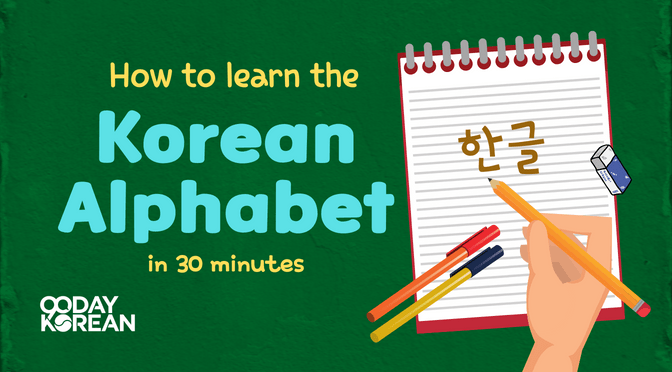
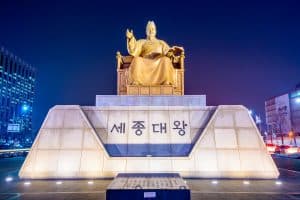
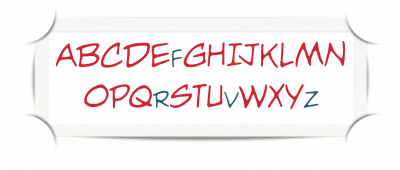

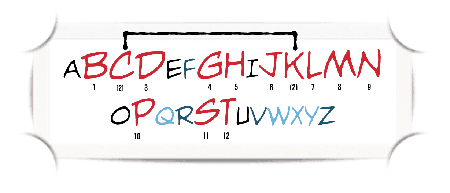
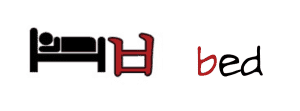
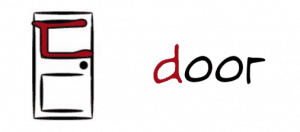

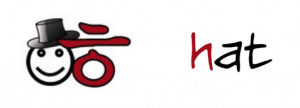
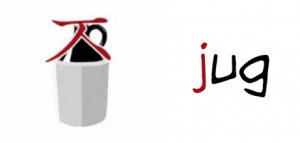
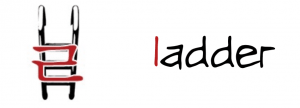



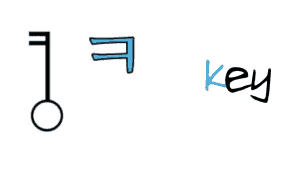
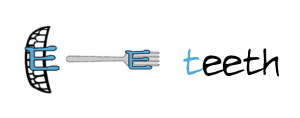
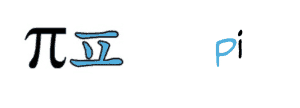
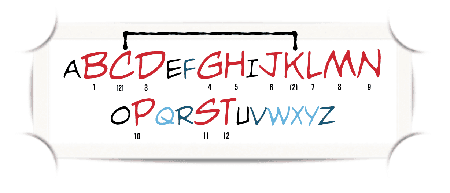
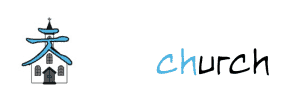


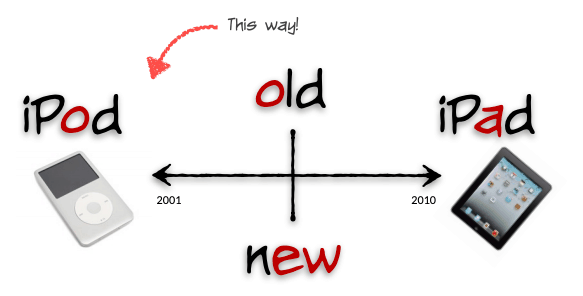
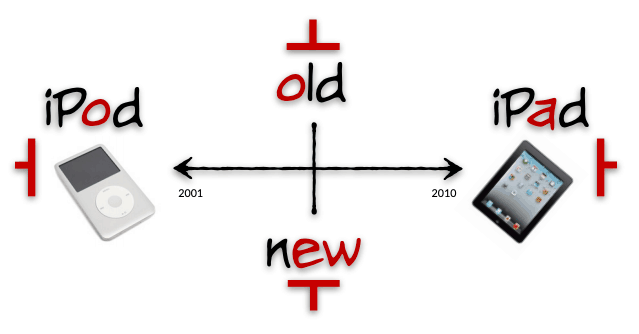
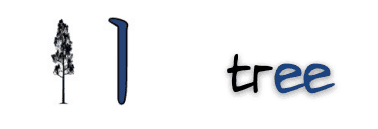



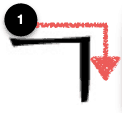
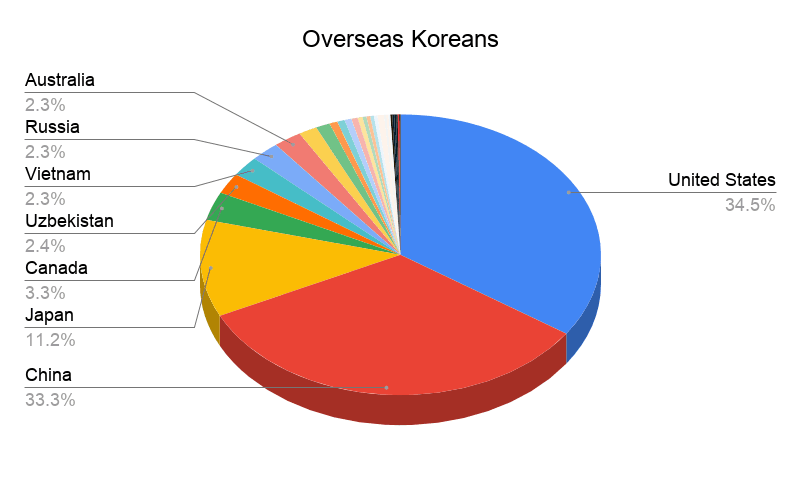
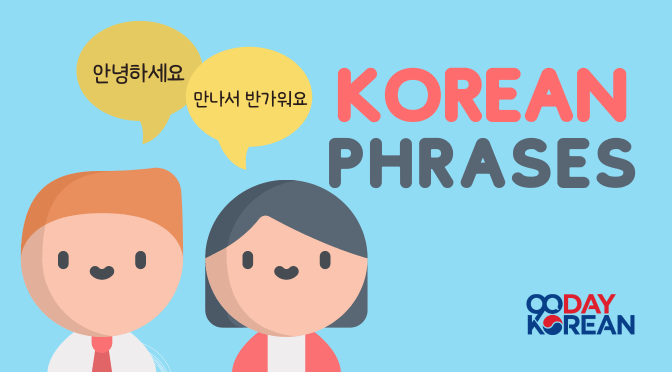

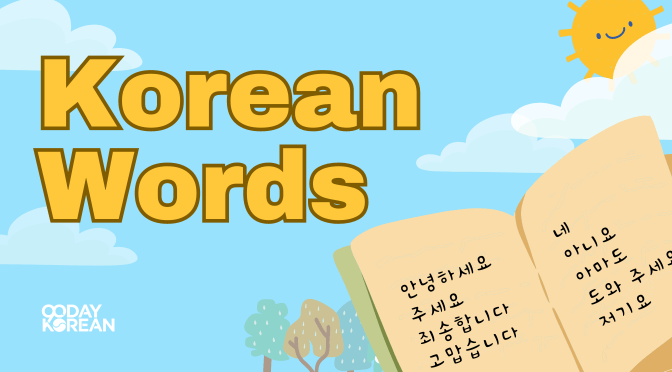

Its a great pleasure to get this website ,its just awesome,its helps me so much to learn korean in a easiest way by give example pronunciation with sound and etc , its appreciatable…. Keep it up, and thanks for your hard work, giving us such a big opportunity to learn
Glad to hear that, Humaira! Thanks a lot for your kind words. ^^
I’m glad that I found this article
That’s great to hear, Fairuz! I hope the article helped you in learning the Korean Alphabet. ^^